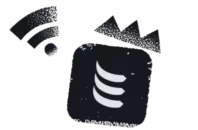What is WSDL (Web Services Description Language)?
WSDL (Web Services Description Language) is an XML-based language used to describe the functionalities, operations, and interfaces of a web service. It provides a standardized format for defining the structure and behavior of web services, allowing clients to understand how to interact with the service.
The key components of WSDL include:
Service Definition: The WSDL document starts with a definition of the web service itself. It specifies the service name, target namespace, and any namespaces used in the document.
Types: The types section defines the data types used by the web service. It specifies the structure and format of input and output parameters, including primitive data types, complex types, and any defined data structures.
Messages: Messages define the abstract data exchanged between the web service and its clients. They describe the input and output parameters for each operation, including their names, types, and optional documentation.
Operations: Operations represent the actions or functionalities provided by the web service. Each operation specifies its name, input message, output message, and any fault messages associated with error handling.
Port Types: Port types define a set of related operations. They group together the messages and operations needed to perform a particular set of tasks or functionalities.
Binding: The binding section specifies the protocol and message format used for accessing the web service. It defines how the messages are formatted and transmitted, such as using SOAP (Simple Object Access Protocol) over HTTP or other protocols.
Service: The service section provides the endpoint information for accessing the web service. It specifies the URL or network address where the service is available and may include additional details like the transport protocol and binding information.
WSDL plays a crucial role in web service development and integration. It serves as a contract between the service provider and the service consumer, providing a clear understanding of the service’s operations, data structures, and communication protocols. Clients can use the WSDL document to generate client-side code or configure their applications to communicate with the web service effectively.
WSDL documents are typically machine-readable and can be used by tools and frameworks to automate the generation of code, stubs, and client libraries, making it easier to consume and interact with web services.
How does WSDL work?
WSDL (Web Services Description Language) works as a standardized format for describing the functionalities, interfaces, and operations of a web service. It allows clients to understand how to interact with the service by providing a detailed description of its structure and behavior.
Here’s how WSDL works:
WSDL Document Creation: The service provider creates a WSDL document that describes the web service. This document is typically written in XML and contains sections such as service definition, types, messages, operations, port types, binding, and service.
Publishing the WSDL Document: The service provider publishes the WSDL document in a location accessible to potential service consumers. This can be a public URL or a network location where the document can be retrieved.
Service Discovery: Potential service consumers who are interested in using the web service search for its WSDL document. They can obtain the WSDL document through various means, such as direct communication with the service provider, browsing service directories, or accessing a centralized repository.
WSDL Parsing: The service consumer retrieves the WSDL document and parses it to extract relevant information about the web service. The consumer’s development tools or frameworks can handle this parsing process, interpreting the XML structure of the WSDL document.
Understanding Service Structure: The service consumer analyzes the WSDL document to understand the structure of the web service. It identifies the service’s operations, input and output parameters, data types, and the communication protocol and message format used.
Generating Client Code: Based on the information extracted from the WSDL document, the service consumer can generate client-side code or configure their application to interact with the web service. This code generation process can be automated using development tools and frameworks that support WSDL.
Interacting with the Web Service: With the client code in place, the service consumer can use it to make requests to the web service. The client code utilizes the communication protocol and message format specified in the WSDL document to send requests and receive responses.
By following the guidelines and information provided in the WSDL document, service consumers can effectively communicate with the web service without needing to understand the internal implementation details. The WSDL acts as a contract between the service provider and consumer, ensuring a standardized and interoperable way to interact with the web service across different platforms and technologies.
Overall, WSDL simplifies the process of discovering, understanding, and integrating with web services, enabling effective communication and interaction between service providers and consumers.
